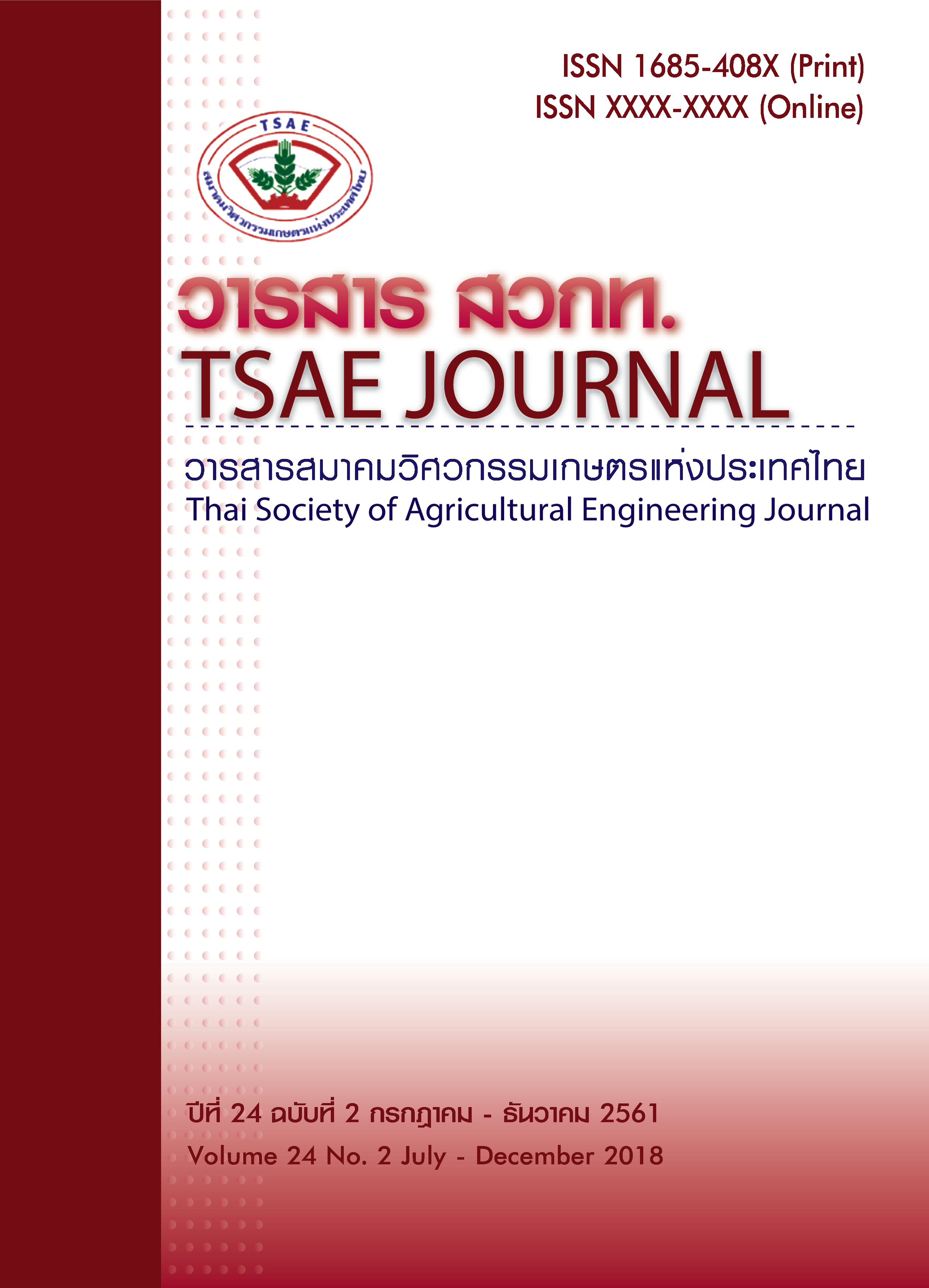Estimating Infestation Level of Sitophilus zeamais (Maize weevil) during Paddy Storage by Carbon Dioxide Concentration Monitoring
Main Article Content
บทคัดย่อ
This research aimed at evaluating the capability and limitations of the carbon dioxide concentration and paddy temperature monitoring technique for estimating the infestation level of Sitophilus zeamais during paddy storage in PP (polypropylene) tanks and galvanized steel silos. Six levels of S. zeamais infestation, which were 0, 2, 3, 4, 5 and 6insect per one kilogram of paddy (IPK), were investigated in the PP tank experiment. The estimated number of insects per 1 kg of paddy (IPKest) for each trial was calculated from the difference between the rate of change of CO2 concentration in the infested silo (i.e., IPK = 2, 3, 4, 5 and 6insect kg-1) and the insect-free silo (IPK = 0 insect kg-1) divided by the respiration rate of one S. zeamais. One sample t-test analyses showed that the technique could estimatethe infestation levels of S. zeamais correctlywhen the infestation level was lower than 6 insect kg-1. In the PP tank experiment, the physical properties of the paddy (i.e., moisture content, 1,000 kernel weight and percentage of weight loss) were determined before and after all replicates. No significant correlation between the deterioration of the physical properties and the infestation levels was found. However, this was to the short storage period (i.e., 4 d). The second experiment was conducted in two galvanized steel silos. The insect infestation level (i.e., the actual IPK) was at 2 insect kg-1 in the first silo while no insect was introduced (IPK = 0 insect kg-1) in the second silo. The IPKest in the first silo from the first, second and third trials were 4.35, 10.58, and 17.83 insects kg-1, respectively, which were approximately 2, 5 and 9 times higher than the actual IPKs. This discrepancy in IPKwas caused by unexpected infestations of ants and mold in the first silo. In conclusion, the second experiment highlighted critical limitations of the monitoring technique proposed by this study, including the species and life stages of infesting insects, other type of pest, and air-tightness of and environment around the silo. In order to increase the precision of the IPK estimation, these limitations must be incorporated in the calculation.
Article Details
สมาคมวิศวกรรมเกษตรแห่งประเทศไทย
Thai Socities of Agricultural Engineering


